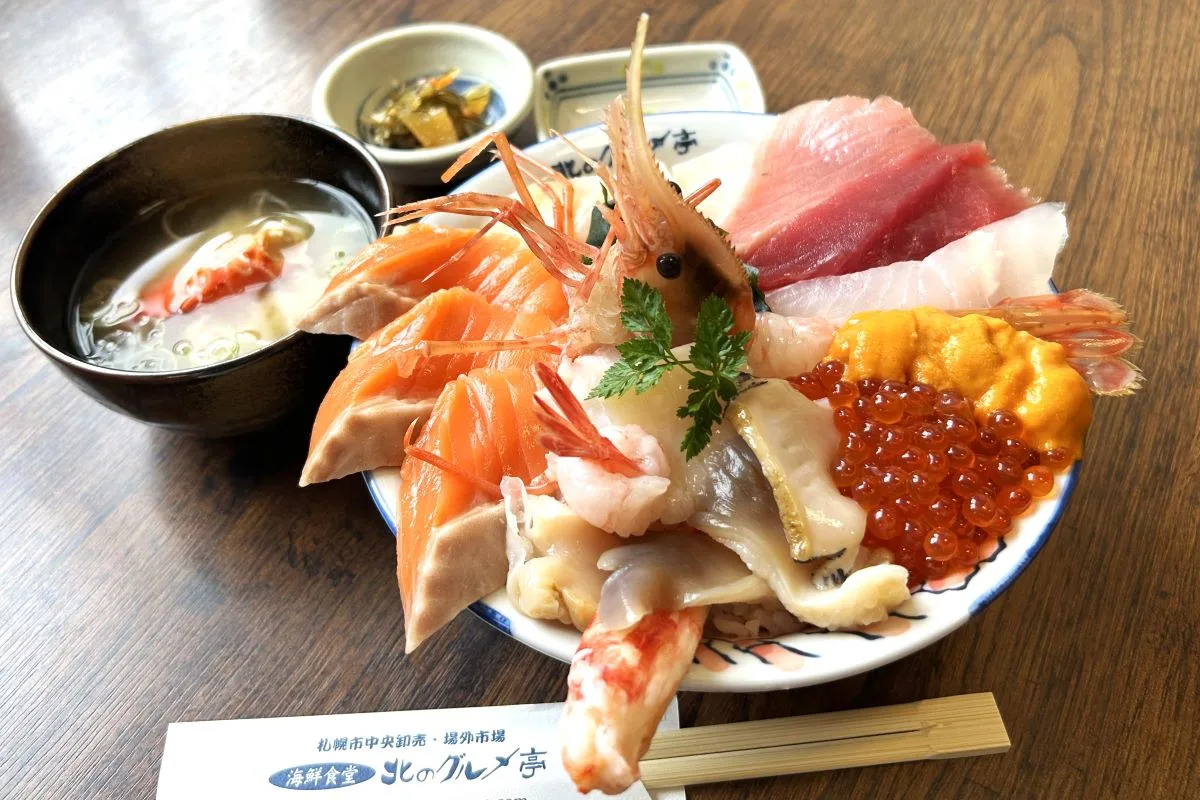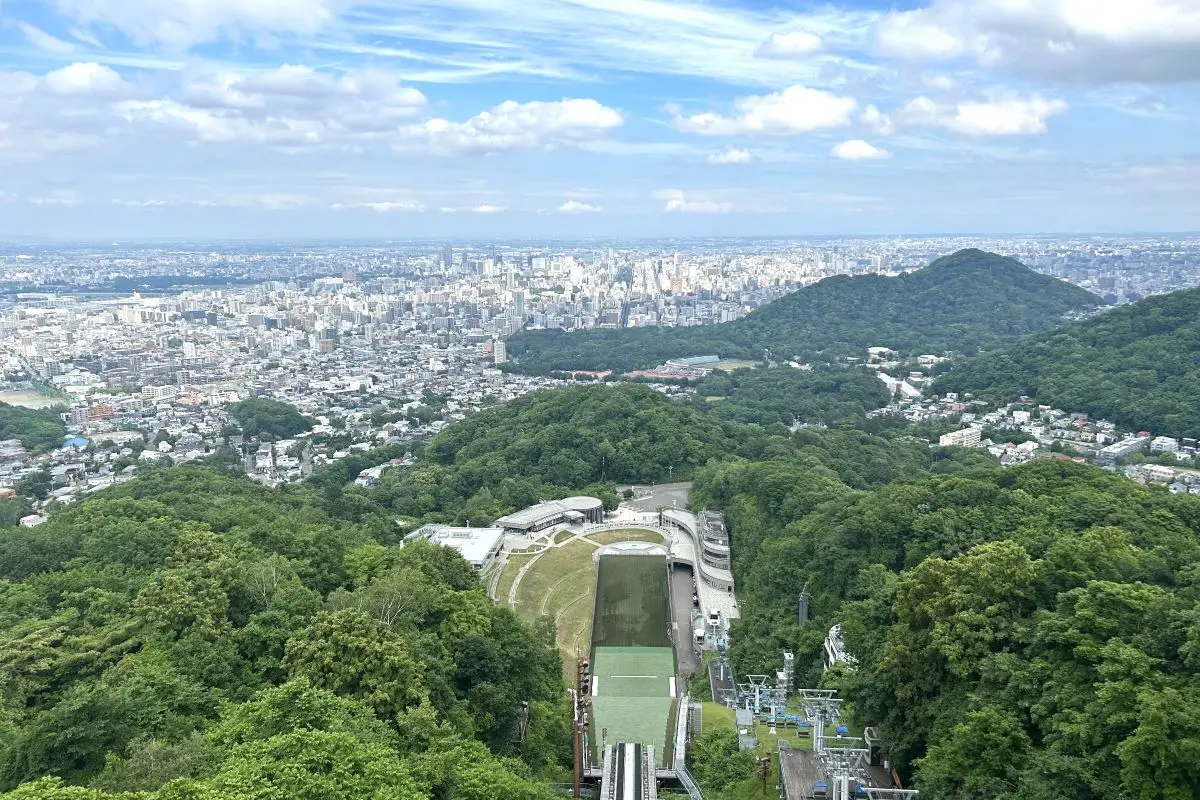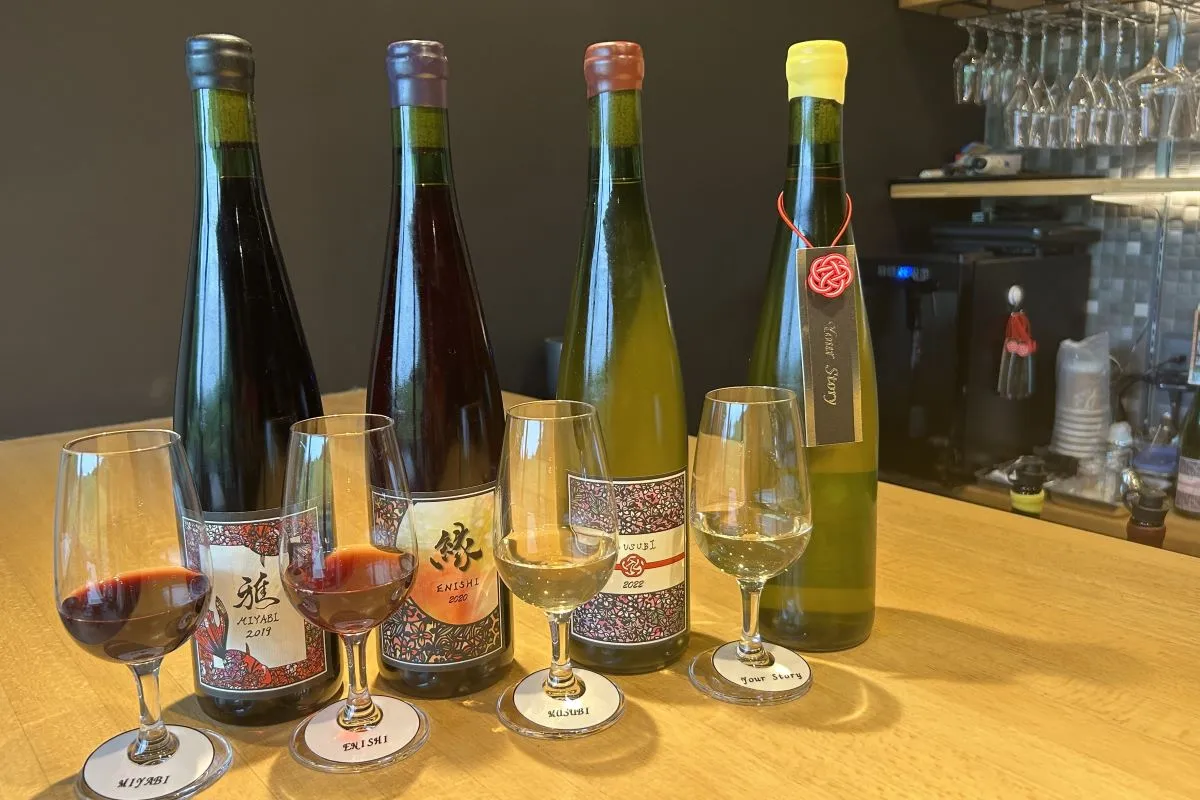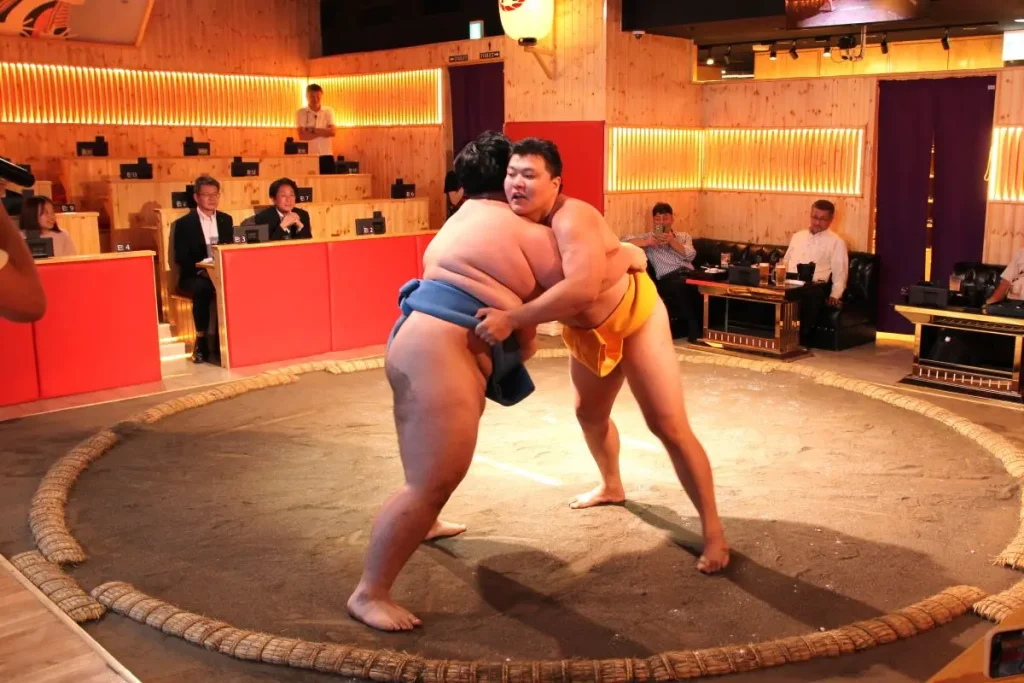
“Sapporo Sumo Club Entertainment,” where guests can enjoy a “sumo show” featuring demonstrations of sumo techniques, rituals, and training sessions while dining, has opened in the Susukino area of Sapporo. Inside the venue, a full-sized circular dohyō (ring), identical to those used in professional tournaments, has been built. Former wrestlers perform in matches, and guests can also try salt-throwing and even challenge the wrestlers. This offers a unique new experience not only for international tourists but also for local residents.
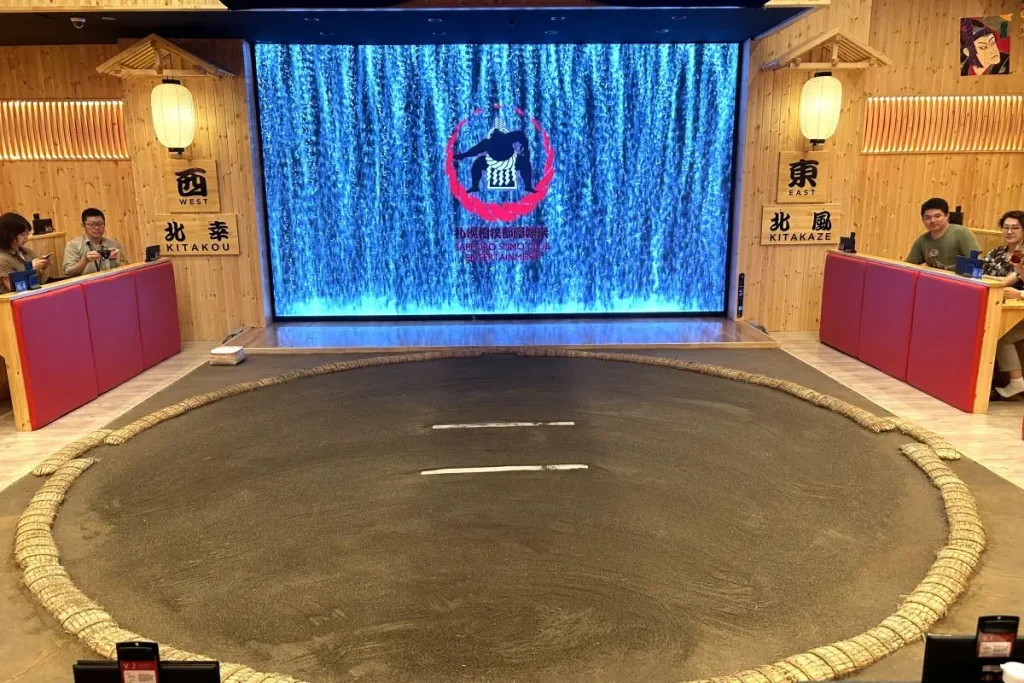
The venue opened in mid-August 2025 in the basement of the Minami 4 Nishi 2 Building, located in the center of Sapporo. In the middle of the venue stands the circular dohyō (ring) measuring 4.55 meters (15 feet) in diameter, the same size as an actual professional ring. Tiered spectator seating is arranged on the east and west sides of the ring. Although the shows are staged for entertainment, Sapporo Sumo Club Entertainment is officially endorsed by the 63rd Yokozuna ASAHIFUJI and the 70th Yokozuna HARUMAFUJI.
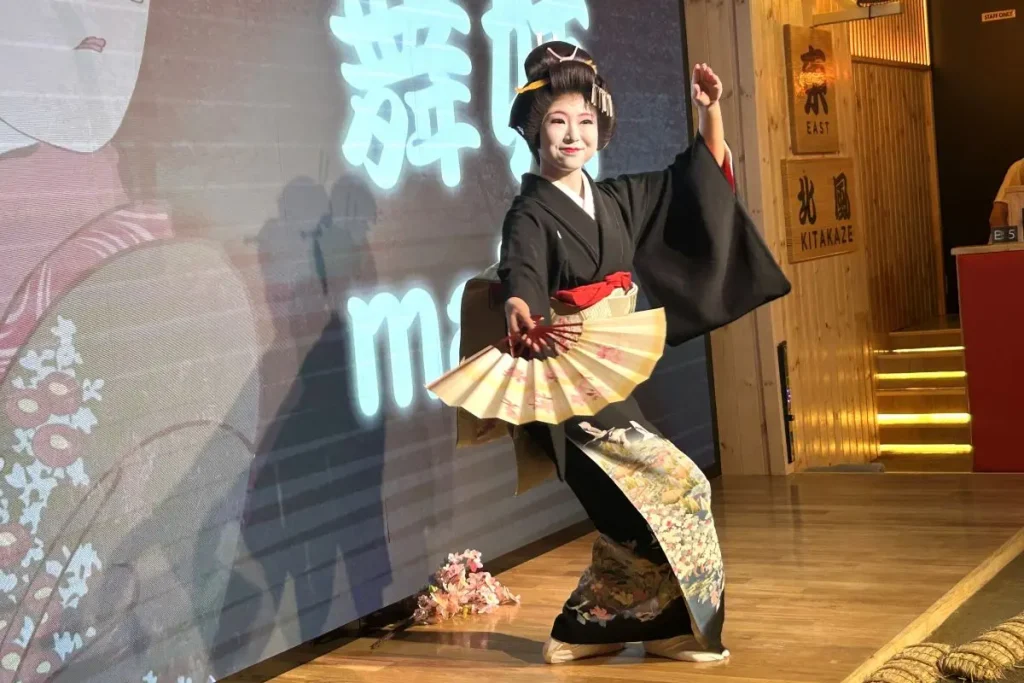
The show begins with a performance of Nihon-buyō (Japanese Dance). A woman dressed in a kimono with a traditional Japanese hairstyle performs while holding cherry blossom branches and a hand fan. Although she is not an actual geisha, the graceful dance, accompanied by traditional instrumental music, allows guests to experience the refined atmosphere of Japanese entertainment.
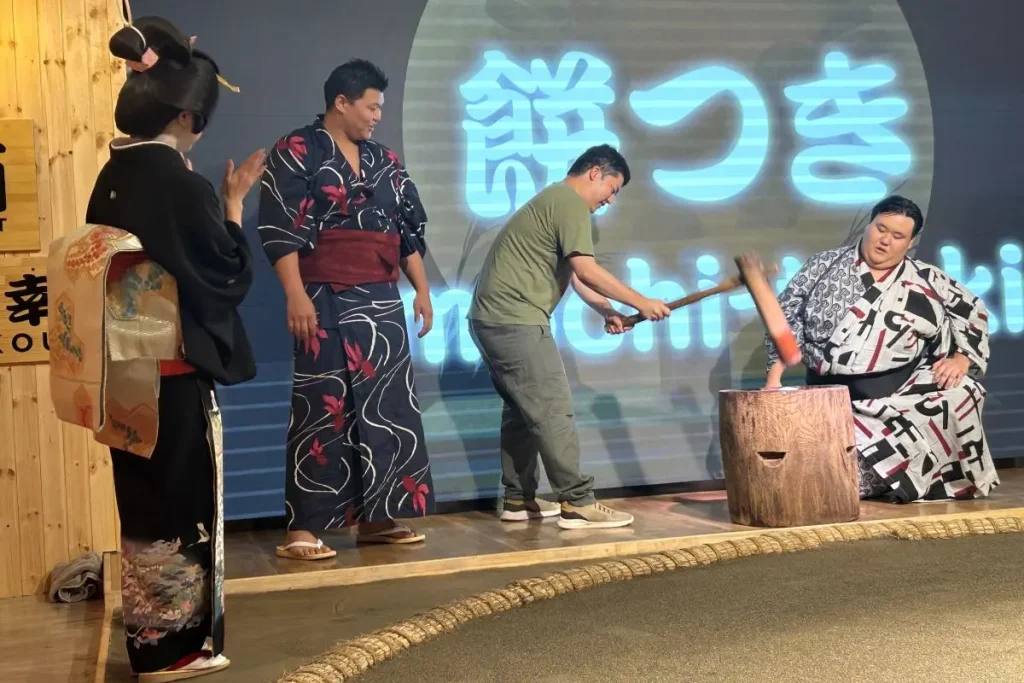
Next, a mochi-pounding demonstration using an usu (wooden mortar) and kine (wooden mallet) takes place. Former wrestlers pound the rice rhythmically to the lively chant of “Yoishō, yoishō!”, thrilling the guests. Afterwards, guests can also take part in the mochi-pounding experience. Even among locals, few might have ever had the chance to try this.
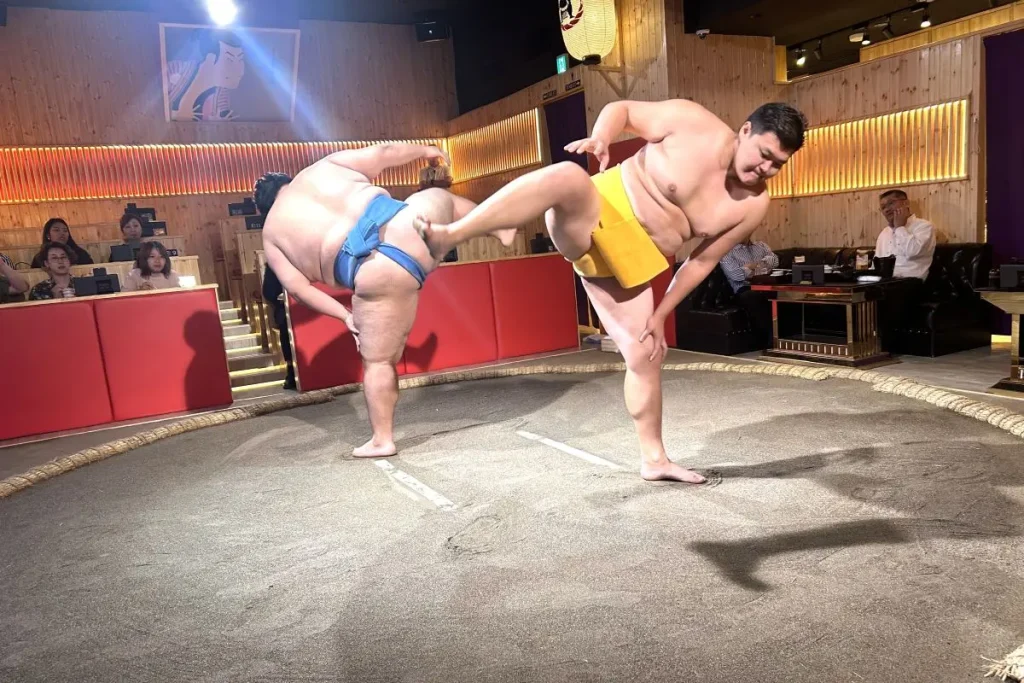
The long-awaited sumo show is about to begin. With the sharp rhythmic beat of wooden clappers, two former wrestlers, KITAKAZE and KITAKŌ, appear from the east and west, wearing mawashi, a 30-foot-long belt. The MC explains, “Stamping the feet, called shiko, is said to drive away evil spirits underground and calm the earth,” as the wrestlers demonstrate shiko, suri-ashi (sliding steps), and mata-wari (middle splits). During the practice match, the loud sound of bodies colliding echoes through the venue, so powerful that guests can even see the spray of sweat.
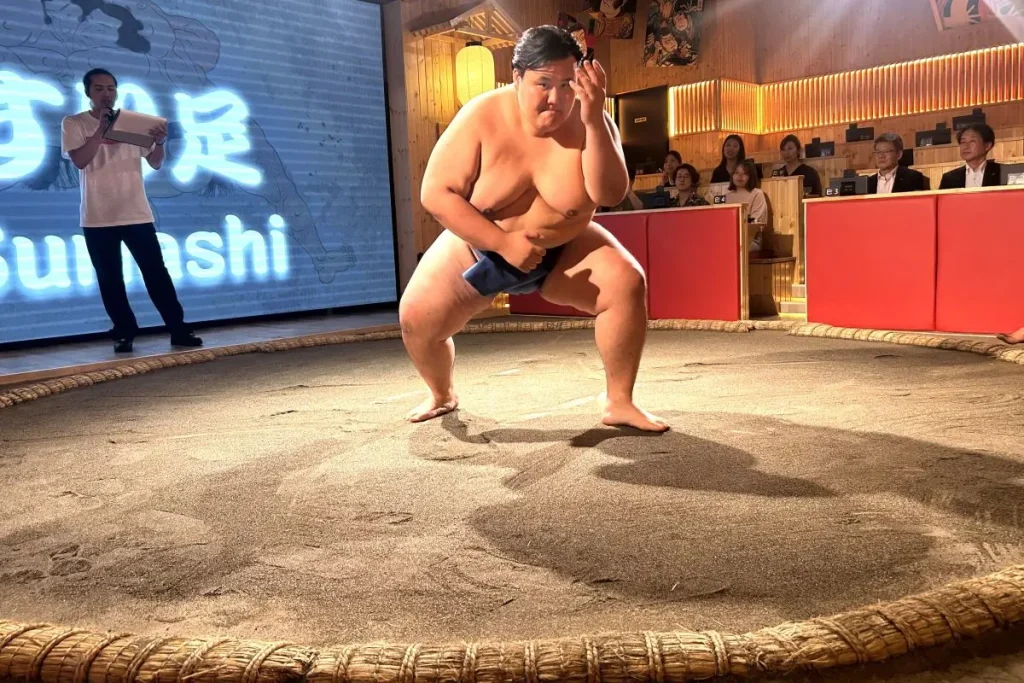
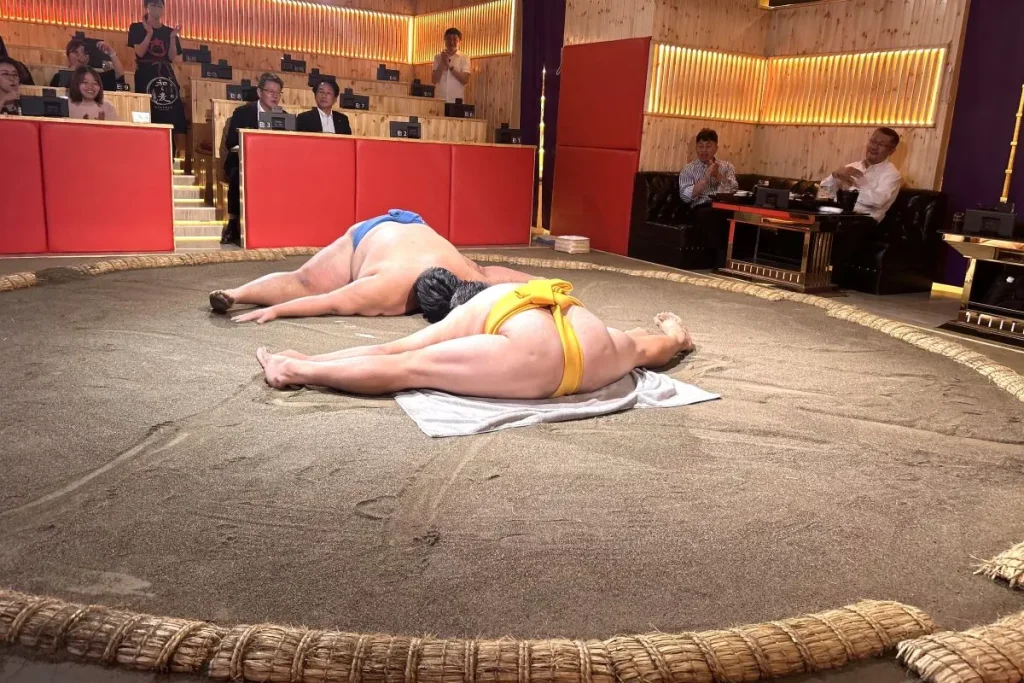
The rules of a sumo match are also explained: “A wrestler loses if they touch the ground with their hands inside the ring, or if any part of the body goes outside the ring.” The MC continues, “Punching, kicking, or grabbing hair are prohibited, called kinjite,” while the two former wrestlers demonstrate these moves. By showcasing moves that could never happen in real sumo, the wrestlers add a humorous twist that keeps the guests entertained.
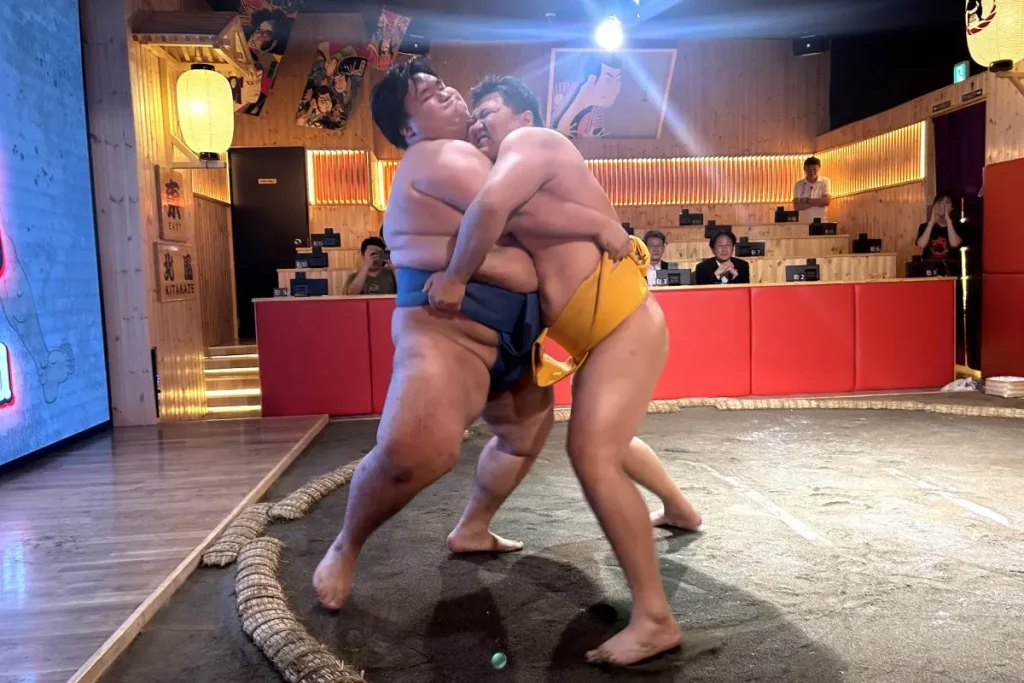
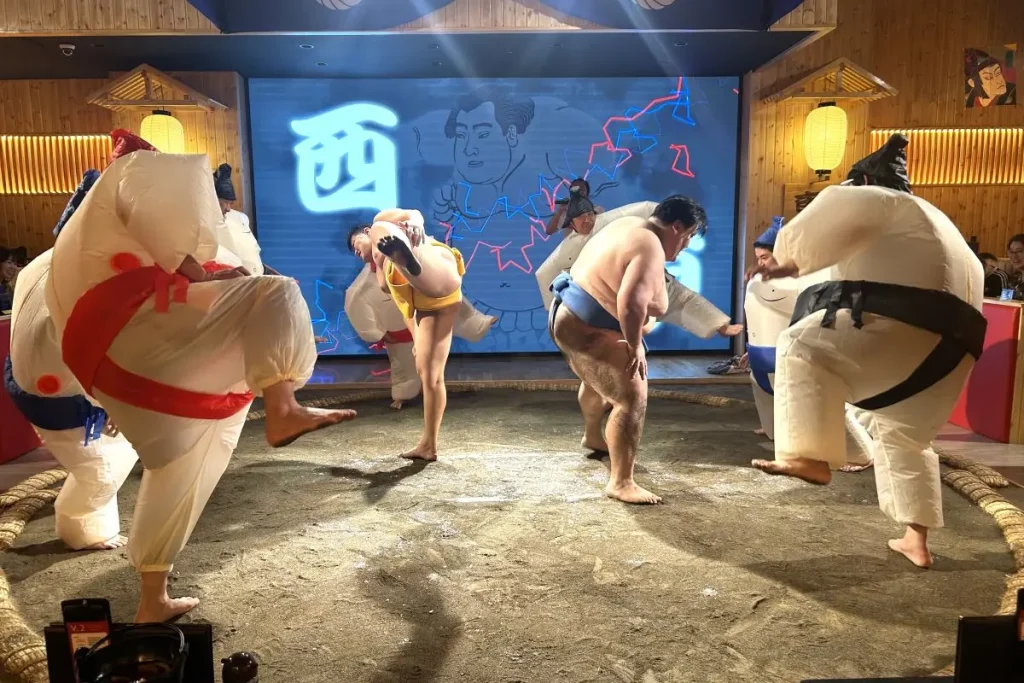
After the wrestlers’ match, it’s time for guests to come down to the dohyō (ring) and try salt-throwing. Some guests get the chance to step into the ring and face the wrestlers themselves. After changing into sumo costumes that inflate to give them a wrestler-like body shape, they appear on the ring. They attempt to collide with the wrestlers, even though the wrestlers remain unmoved by the impact or, conversely, effortlessly lift the participants. These moments draw cheers and laughter from the other guests, who thoroughly enjoy watching the action.
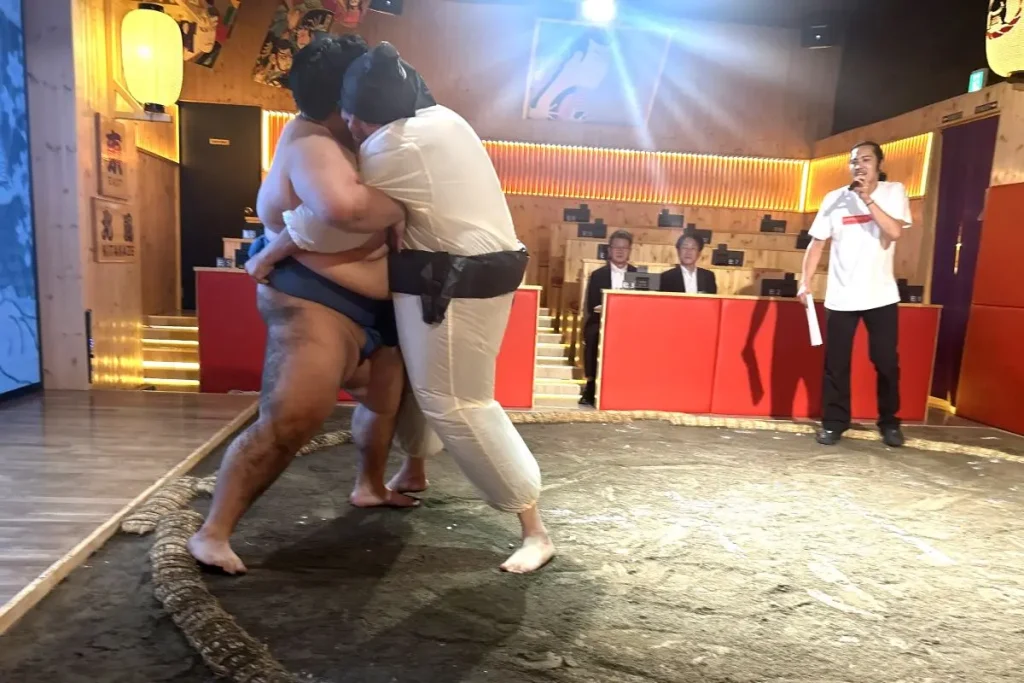
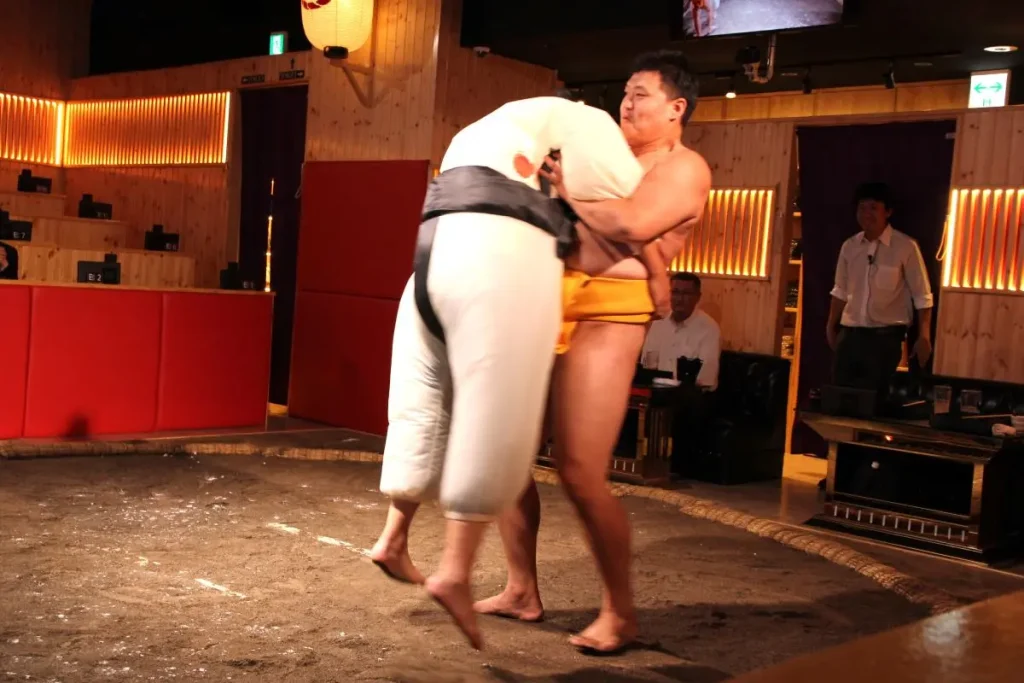
No need to worry about getting dirty during the match, even though guests enter the dohyō (ring) barefoot. A foot-washing area and showers are available in the venue, so guests can participate in the match without any concern.
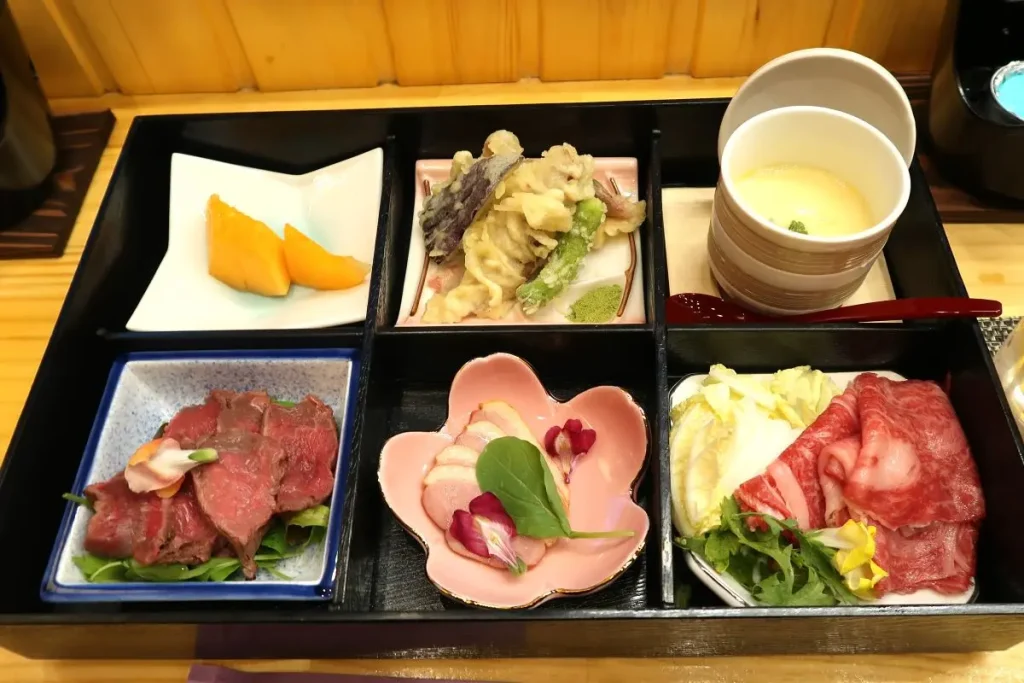
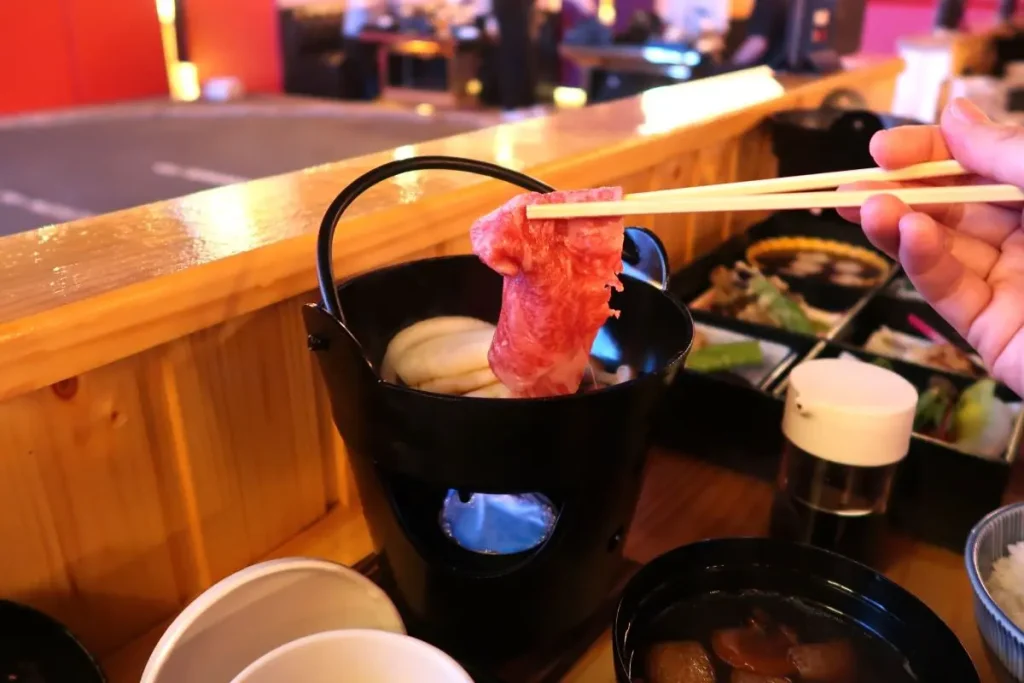
Meals are served before the show. Guests can choose from three options: the “Beef Sukiyaki Set Meal,” the “Crab Shabu-Shabu Set Meal,” or the “Vegan Set Meal.” The Beef Sukiyaki Set Meal includes beef-wrapped vegetables tempura, roast beef, smoked duck, and beef-flake rice, making it a hearty and satisfying meal.
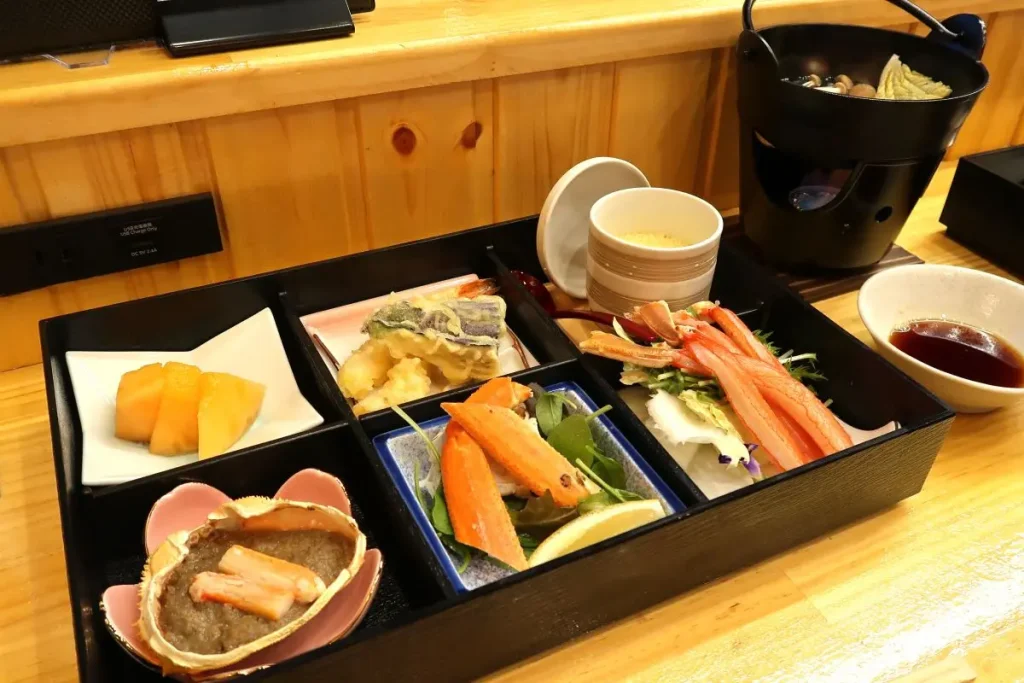
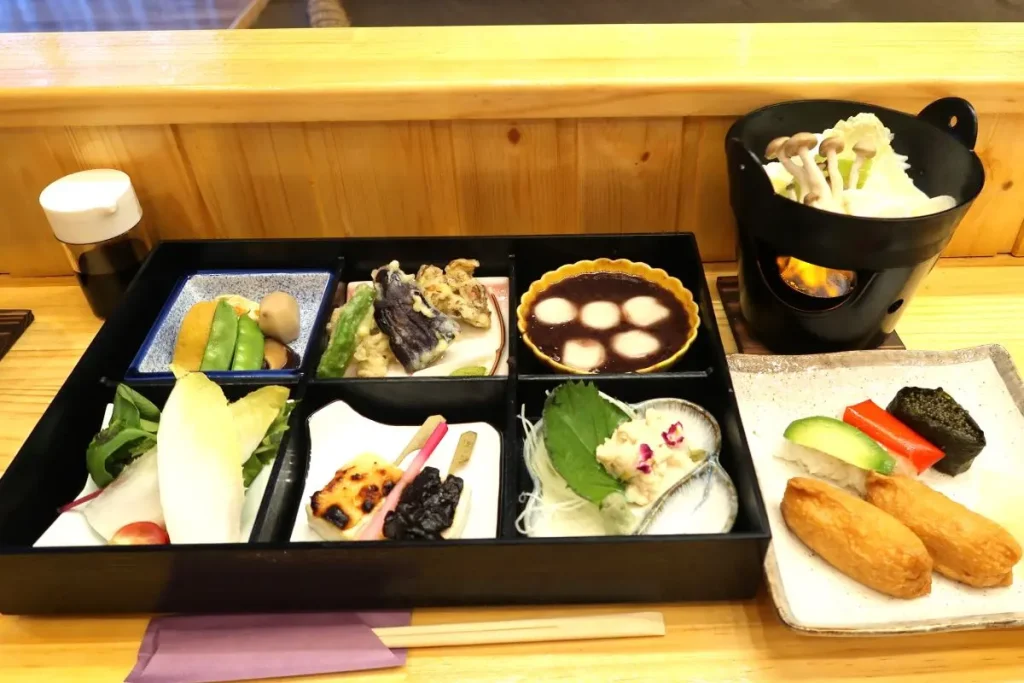
The Crab Shabu-Shabu Set Meal features seafood-centered dishes such as a crab shell filled with crab miso and leg meat, crab salad, shrimp tempura, and crab-flake rice. Like the other options, it is served with a chanko-style soup bowl on the side.
The Vegan Set Meal features healthy dishes made without animal ingredients, such as yuba (tofu skin), simmered wheat gluten with vegetables, tofu dengaku, and vegetable sushi made with avocado and tonburi (land caviar). Each set meal includes one drink, and additional drinks or side dishes, such as imo-mochi (potato cakes), can be ordered separately.
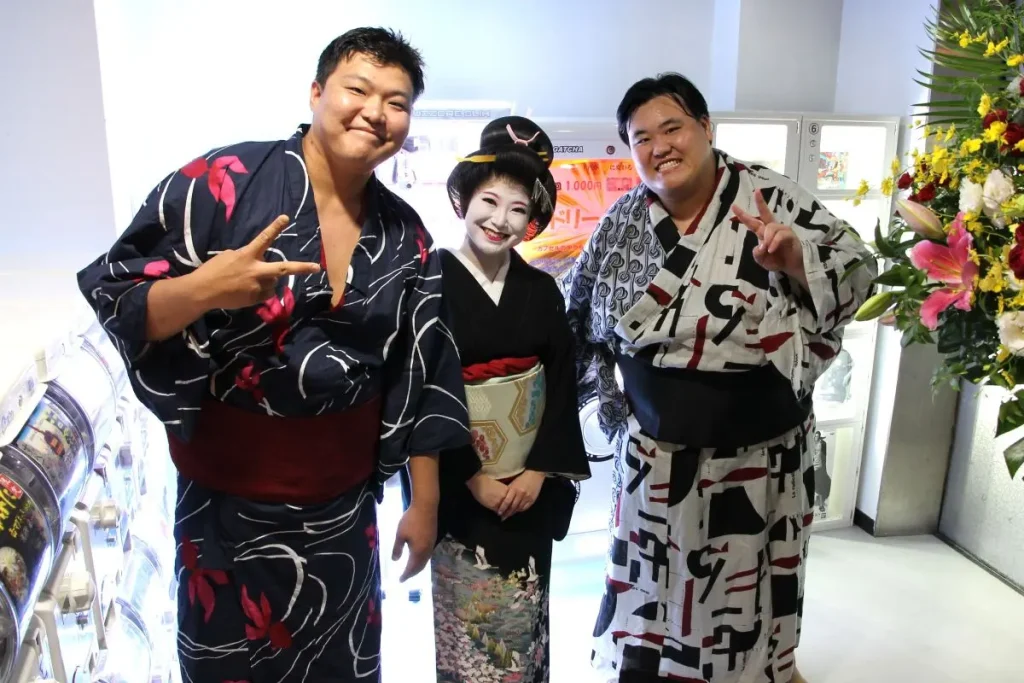
After the sumo show, each guest group can take a photo with the dancer and the wrestlers. At the moment of the photo shoot, they shout the sumo-style chant, “3, 2, 1, Dosukoi!” Guests receive a printed photo at the exit to take home, along with souvenirs such as the mochi they helped pound earlier, an original mini towel, and a pin badge.
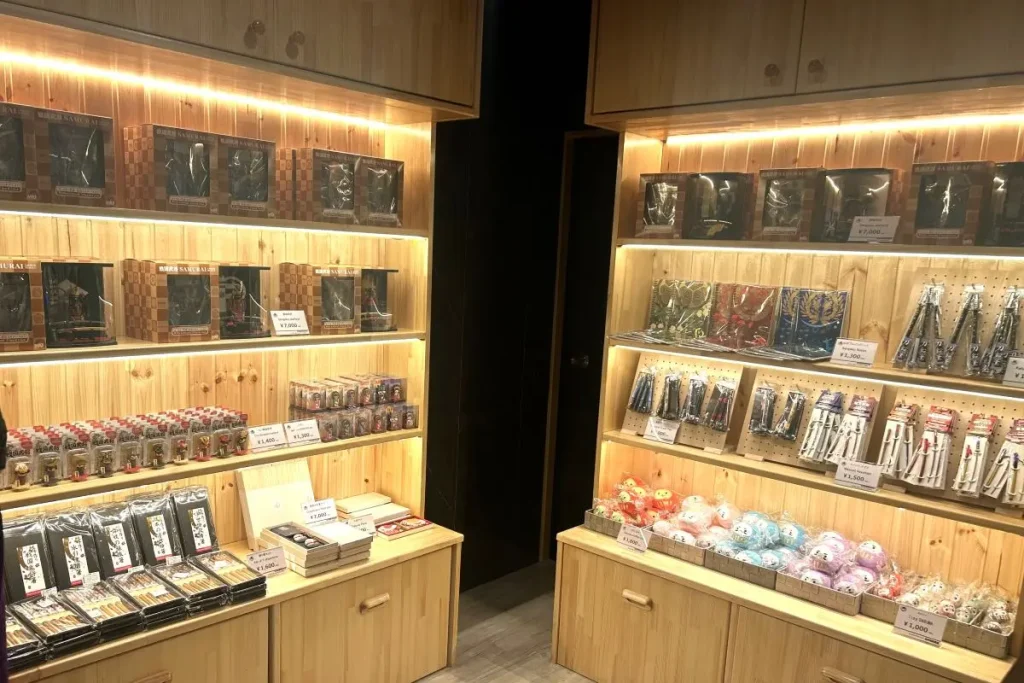
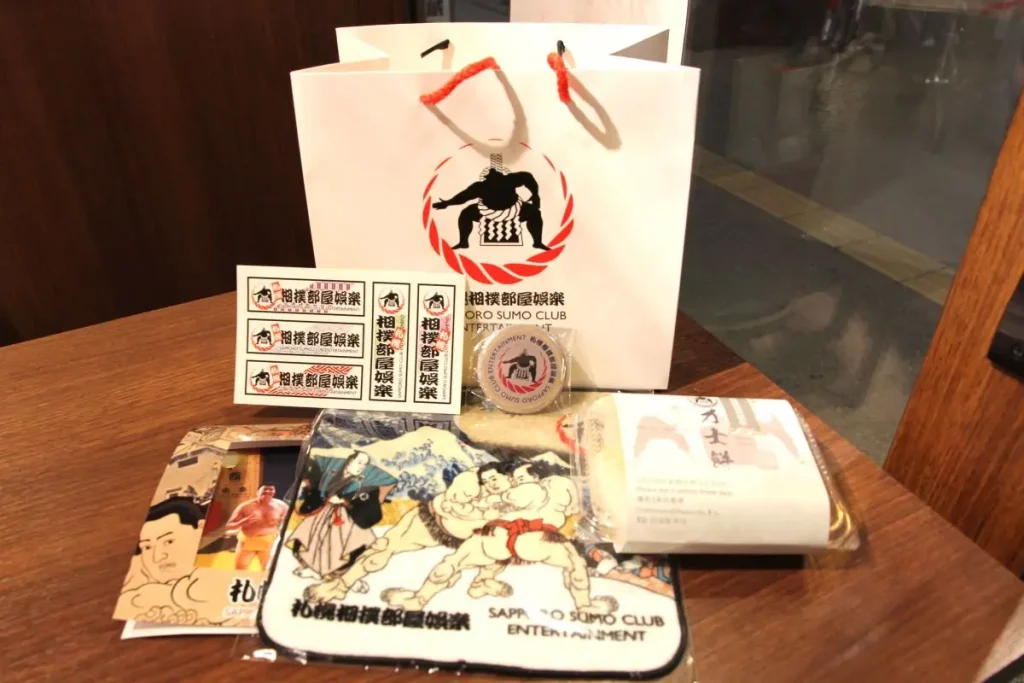
Additionally, the venue sells original goods such as towels and T-shirts featuring the logo.
The show lasts about two hours, including both the meal and the performance. The event runs four times daily: 11:00 AM, 1:30 PM, 5:00 PM, and 7:30 PM. The standard price is 18,000 JPY per person, including a set meal and one drink. VIP seats, which secure a front-row view, are 20,000 JPY, while V-VIP seats, called “sunakaburi seats,” located right in front of the ring, are available for up to four guests at 100,000 JPY.





